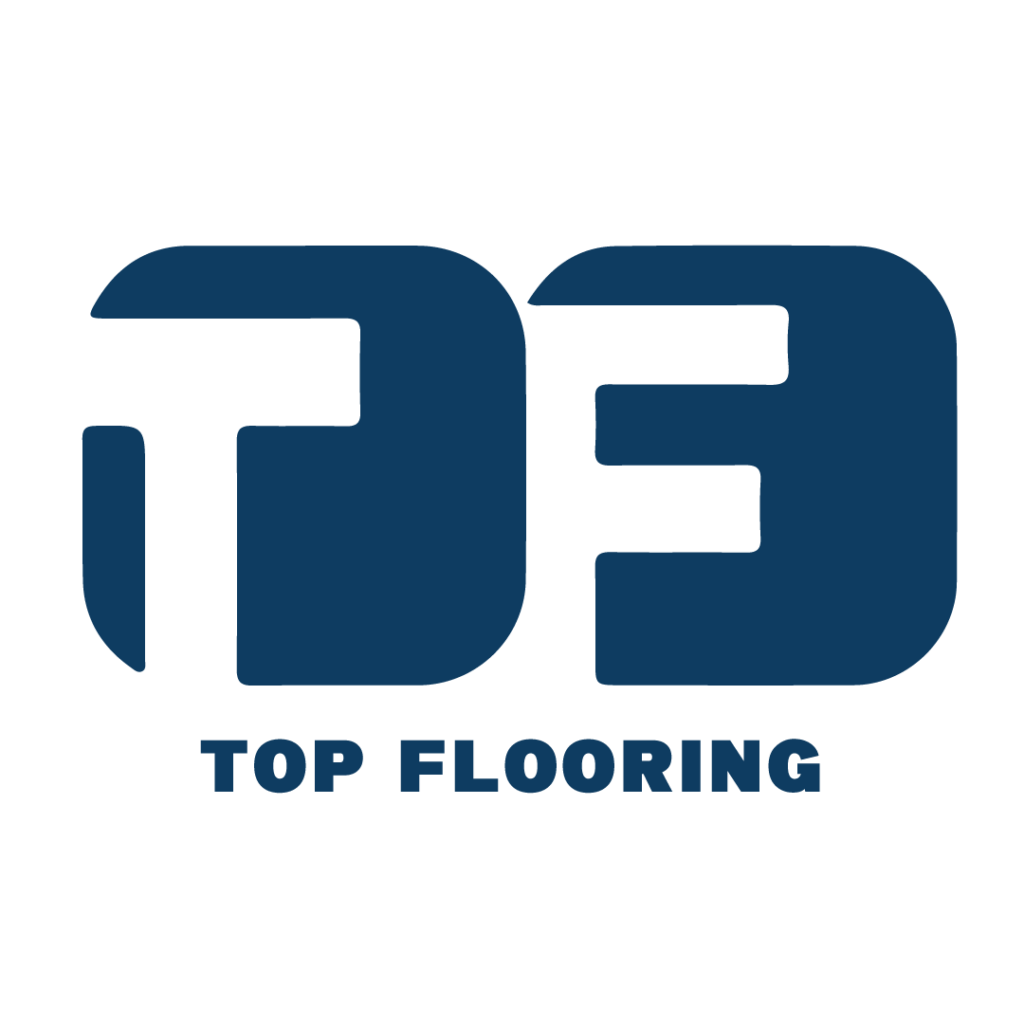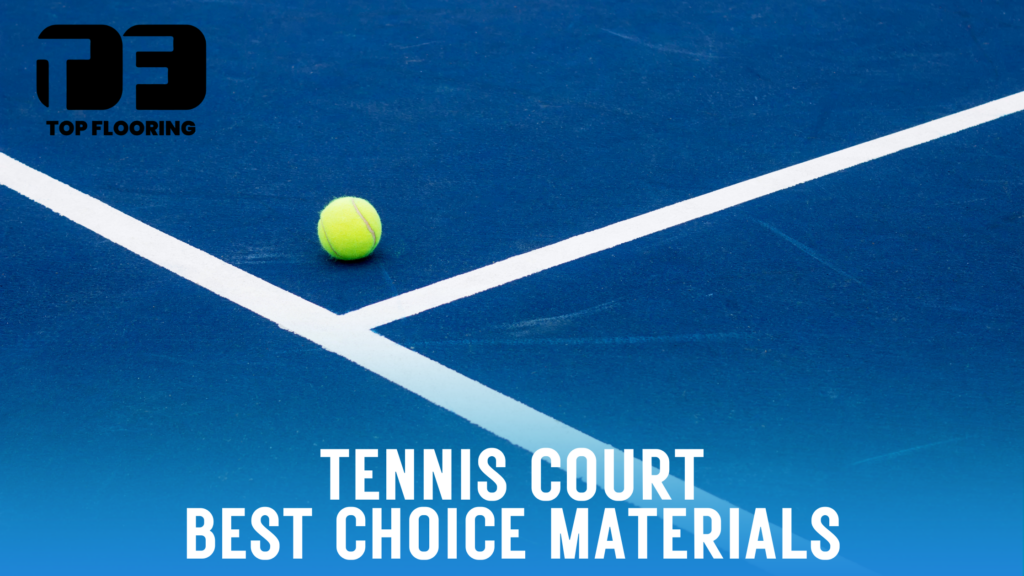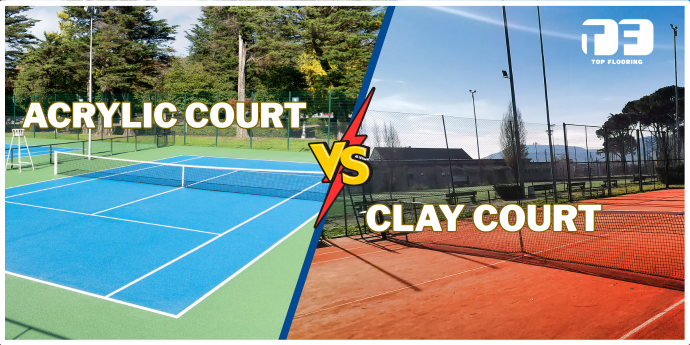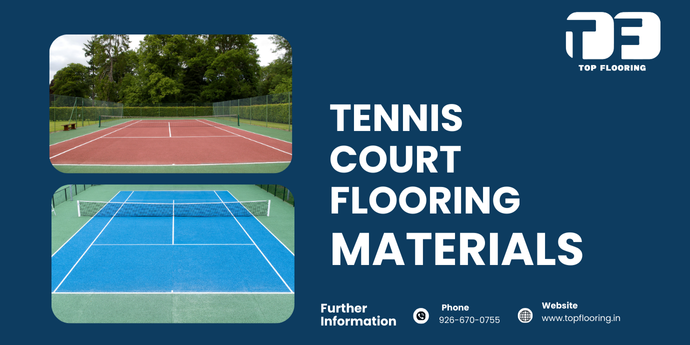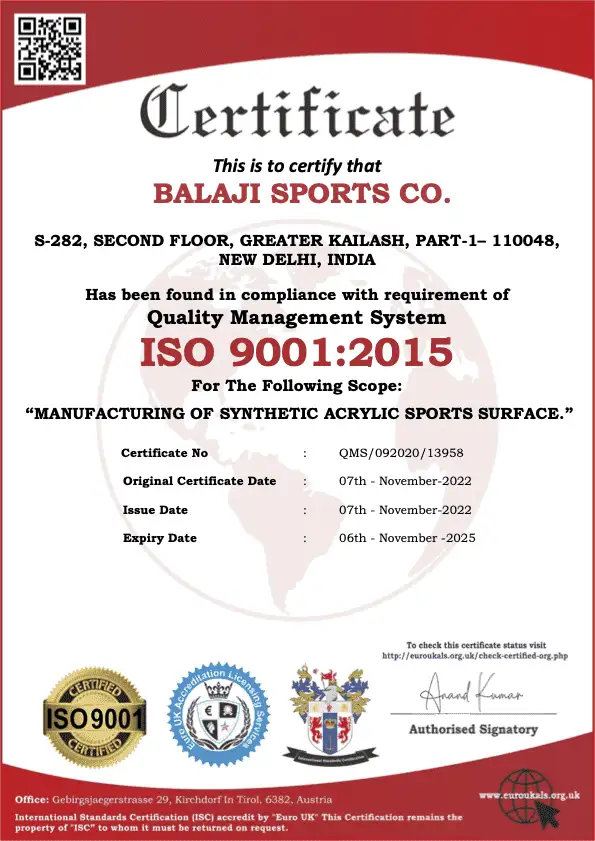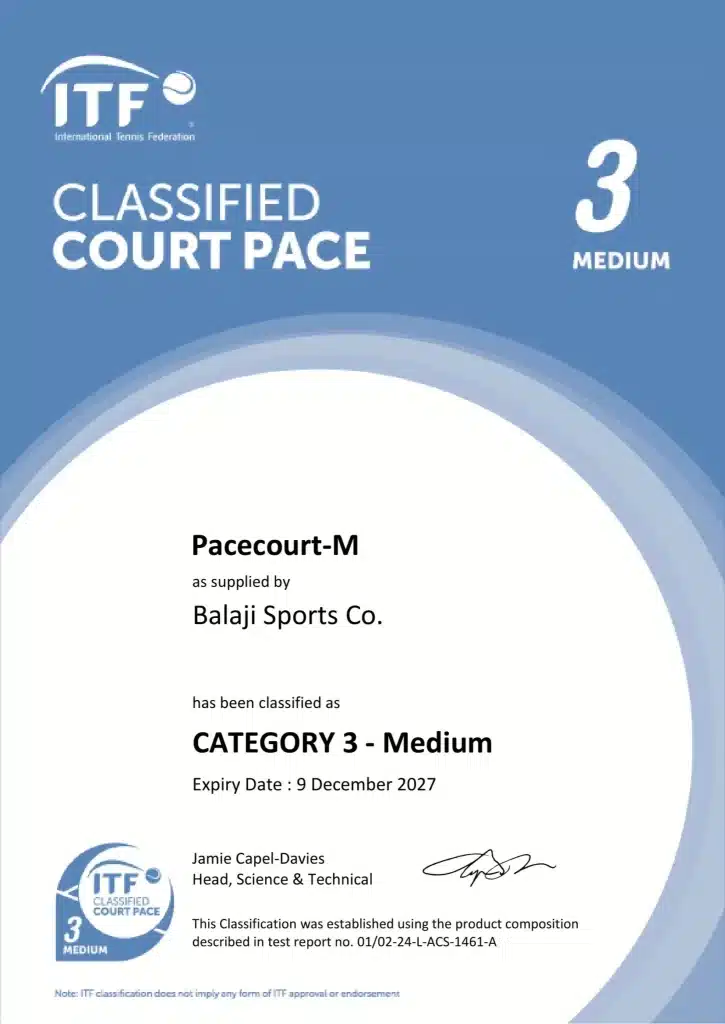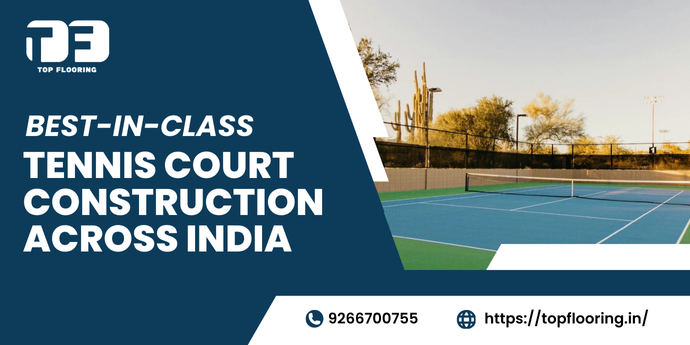
Tennis is one of the fastest growing sports in India with demand coming from schools, sports academies, clubs and residential communities. As the game spreads across urban and semi-urban areas the need for high quality tennis court construction and tennis court flooring has never been greater. A well built sports court not only improves the playing experience, but also ensures safety, durability and long term value for facilities. Tennis court builders play a vital role in creating such world-class courts.
The flooring of a tennis court is the foundation that shapes the bounce of the ball, the grip underfoot and ultimately the fair play and enjoyment of the game. Poorly constructed sports courts lead to uneven play, high risks of injuries and costly repairs. Tennis court surface material selection is crucial here. While professional tennis court construction ensures long-lasting performance and international standards with the right tennis court material.
Top Flooring, one of India’s leading tennis court construction companies, specializes in synthetic acrylic tennis court construction. With years of experience, certified sports flooring materials and an extensive portfolio of successful projects. Top Flooring has become a trusted tennis court company for facilities looking to combine quality with affordability.
This blog explores best tennis court construction, why Top Flooring’s synthetic acrylic materials is the best choice. And how Top Flooring delivers professional grade courts across India.
Why Tennis Court Construction Matters?
Player Performance & Safety
The surface of a tennis court directly impacts a player’s performance. Consistent bounce, surface grip and traction all play a crucial role in quality and injury prevention. For example a slippery or uneven tennis court surface increases the chance of sprains and falls while a well textured acrylic surface ensures controlled movement, smooth sliding and quick recovery after shots. Choosing the right tennis hard court surface material improves safety and play.
Durability & Maintenance
Tennis courts are long term investments. Courts built with professional planning and high grade flooring materials and tennis court material can last for years before resurfacing is needed. Substandard options often lead to cracks, fading and waterlogging requiring frequent repairs. Durability begins with proper tennis court construction from the base to the final topcoat, supported by reliable tennis court resurfacing materials.
Facility Value
For clubs, schools and residential societies a quality tennis court is more than just a play area – it’s a value added amenity. Professionally built tennis courts attract members, students and even competitive tournaments. Facilities with well maintained tennis courts stand out as hubs for community engagement, fitness and professional training. Working with experienced tennis court installation companies enhances this value further.
Key Factors in Tennis Court Construction
Court Dimensions and Layout
When it comes to tennis court construction, the first thing that matters is the tennis court layout and dimensions. A tennis court must follow the ITF regulations to ensure consistency and fair in the game. For a single tennis court, the court is 23.77 meters (78 feet) long and 8.23 meters (27 feet) wide and for a double tennis court it’s the same length but 10.97 meters (36 feet) wide.
Beyond these tennis court dimensions, you need to have enough run-off space around the playing area—at least 3.66 meters (12 feet) behind the baselines and 3.05 meters (10 feet) along the sidelines. This extra space gives players the freedom to run at full speed, reduces the risk of injury and supports fast rallies. Accurate marking of lines and precise tennis court layout not only maintains the fairness of the game but also the safety and overall playing experience. This is essential for smooth tennis court installation.
Choosing the Right Base Material
Another important factor in tennis court making is the tennis court base material that determines the strength and long lasting of the surface. In India where the weather can be extreme between scorching summers and heavy monsoons, the two most common base options are concrete base and asphalt base. Tennis court concrete base construction is widely considered the most reliable option as it provides long term stability, resists deformation and is highly durable under continuous play. Its ability to withstand temperature changes and overall sturdiness makes it the preferred choice for permanent facilities like clubs, schools and academies.
Tennis court asphalt base construction is slightly more affordable in the short term but can deform under prolonged heat and heavy usage and often leads to uneven surfaces and cracks. For India’s climate where heat, rain and humidity all play a role. A concrete base with an acrylic coating is the most dependable and cost effective option.
Flooring Systems for Tennis Courts
The Tennis court flooring system itself is equally important as it determines how the court will perform in terms of bounce, grip and comfort. Synthetic acrylic flooring, which is Top Flooring’s specialty, has become the most widely used system for acrylic tennis court construction for both professional and recreational courts. Acrylic tennis surfaces are valued for their slip resistance, UV stability, customizable colors and consistent ball response.
Compared to Other Surfaces: Clay courts require daily maintenance and are not suitable for areas with heavy rainfall. Outdoor tennis court material like acrylic proves far more practical. Grass courts are expensive to maintain and deteriorate quickly in the Indian climate. Wooden courts, although good indoors, are vulnerable to humidity and not economical for large scale or outdoor use.
Multi-Layer Acrylic Cushioning
Top Flooring further enhances performance with a multi-layer acrylic cushioning tennis court system that combines strength with player comfort. This involves a primer coat, multiple cushion layers and finishing top coats. The cushion layers absorb shock and reduce strain on joints during long hours of play, while the surface layers provide uniform bounce, grip and wear resistance. This results in a tennis court that is safe and enjoyable, with the perfect balance of speed and comfort. By incorporating these critical factors proper tennis court dimensions, stable base and advanced acrylic flooring systems. Top Flooring ensures that facilities can have world class surfaces suitable for Indian conditions.
Top Flooring Synthetic Acrylic Tennis Court Construction Benefits
Weather Resistance
India’s climate can be unpredictable and harsh with scorching summer heat followed by heavy monsoons and high humidity. Many traditional tennis court surfaces deteriorate quickly under these conditions leading to cracks, waterlogging or fading. Top Flooring addresses these challenges with advanced acrylic coatings. Tennis hard court surface material ensures strength against such weather. This means tennis courts can be played throughout the year, regardless of the season.
Low Maintenance & Long Life
Another benefit is low maintenance and long life of acrylic tennis courts. Unlike clay courts that need daily maintenance or wooden courts that swell and warp, synthetic acrylic surfaces are designed for ease of use. Routine cleaning and basic care is enough to keep them in good condition. Most importantly, resurfacing is required only every 5-7 years, making them a cost effective solution for schools, clubs and communities. By minimizing maintenance and extending the life of the tennis surface. Top Flooring tennis courts help facilities save time and money in the long run, supported by tennis court resurfacing near me services.
Facility Versatility
Moreover, acrylic tennis court versatility, which makes them suitable for various facilities. For schools and universities, these courts have the strength and durability to withstand daily usage by students and maintain performance. For sports clubs and academies, ITF standard tennis surfaces that replicate professional playing conditions are ideal for training and competition. Housing societies and public parks can also use acrylic courts for recreational purposes. As they are affordable and provide a great experience for residents and community members. Top Flooring can offer solutions for every project, from professional sports environment to neighborhood recreation area. This credibility strengthens their reputation as a top tennis court manufacturer in India.
Step by Step Tennis Court Construction Details By Top Flooring
Site Inspection & Planning
The construction process begins with site inspection and planning. Top Flooring evaluates soil strength, drainage patterns and available space before finalizing the layout. This ensures that the court meets FIBA dimensions and has practical elements like fencing, lighting and spectator zones. Those looking for guidance often search how to make a tennis court or build a tennis court.
Base Preparation
Next is the base preparation stage. A strong, compacted base of concrete is laid with a slope of around one percent to allow natural water drainage. This prevents waterlogging, cracks and surface deformities in future. Proper tennis hard court construction ensures long-term durability.
Acrylic or PU Coating Application
Once the base is ready, the acrylic or PU coating system is applied in multiple layers. It starts with a primer coat that bonds the surface to the base, then cushion coats that absorb shock and provide comfort. Color coats are then added in vibrant, UV resistant shades that enhance both performance and aesthetics. Finally, ITF and FIBA approved line markings are applied with precision by experienced tennis court installation companies.
Final Finishing & Quality Testing
The last stage involves finishing and quality testing. Bounce tests are conducted to check consistency across the surface, while slip-resistance tests ensure player safety. Every detail is inspected for durability, aesthetics and international compliance before the court is handed over.

Cost of Tennis Court Construction
The cost of a tennis court depends on tennis court construction cost factors.
- Court Size: The cost of a tennis court is not fixed; it depends on many factors that affect the quality and longevity of the surface. ITF approved tennis court dimensions require a certain amount of space. Many ask how much does it cost to build a tennis court and the average cost of building a tennis court to understand their investment.
- Base Type: Concrete, although expensive to install initially, provides long term stability and durability compared to asphalt. Which deteriorates faster in India’s extreme weather conditions.
- Location: Location also plays a major role in tennis court construction cost. Factors like soil quality, climate, accessibility of the site and need for additional drainage systems can increase costs. Facilities also look for the price to build a tennis court or cost to build a tennis court in the backyard.
- Flooring Choice: Wooden and PU flooring although used in some cases are much more expensive and not suitable for outdoor Indian conditions. While synthetic acrylic tennis courts offer the best balance of affordability, durability and performance, making them ideal as outdoor tennis court surface material.
Synthetic acrylic courts by Top Flooring are the most affordable and sustainable solution in India. Although the initial cost is moderate, the real savings are seen over time. These courts require minimal maintenance, last longer than others and can be used for multiple sports like basketball or pickleball with appropriate markings. For facilities looking to get the best value without compromising on quality, acrylic courts remain the most practical solution.
Why Choose Top Flooring for Tennis Court Construction?
Proven Experience: When it comes to building a tennis court that combines international quality with local adaptability. Top Flooring is the trusted leader. With over 100 successful projects across India. The company has established itself as a proven player in constructing courts for schools, clubs, universities, residential complexes and professional training centers. This extensive experience shows expertise and versatility in handling projects of various sizes and requirements. Top Flooring is among the top tennis court makers in the country.
Certified Quality: Top Flooring is committed to certified quality. Every system and tennis court material used is designed to meet International Tennis Federation (ITF) standards. So the courts deliver consistent ball bounce, reliable grip and professional level play. Whether for recreational use or competitive matches.
End-to-End Service: The company also offers complete end-to-end solutions. From tennis court design and site planning to construction, finishing and even resurfacing or upgrades. Top Flooring provides a one stop solution, so you don’t need to deal with multiple contractors. Facilities also trust them for tennis court renovations.
After-Sales Support: Top Flooring stands out with strong after sales support. Facilities get expert guidance on maintenance practices, tennis court resurfacing and repair solutions. So their tennis courts remain in top condition for years. Their services are highly searched under tennis court resurfacing near me and tennis court repair near me.
Conclusion
A top level game starts with the best tennis court. Quality tennis court construction ensures fair play and safety and long term success of a sports facility. With India’s focus on sports infrastructure growing, choosing the right lawn tennis court construction in India companies is key.
Top Flooring is one of the best in India for synthetic acrylic tennis courts, international standards, durability and affordability. From schools and clubs to housing projects and professional arenas, Top Flooring courts are built to perform and last. As a leading tennis court manufacturer and reliable tennis court company, Top Flooring continues to deliver trusted solutions.
Partner with Top Flooring today to build a tennis court that inspires athletes, communities and time.
Frequently Asked Questions
The main materials used in tennis court construction include a concrete or asphalt base, synthetic acrylic coatings, cushion layers for shock absorption, and UV-resistant topcoats. Some courts may also use clay, grass, or wooden surfaces, though synthetic acrylic is the most practical choice for Indian weather.
The cost of tennis court construction in India depends on factors such as court size, base material, flooring type, and location.
A synthetic tennis court in India typically costs depending on quality, thickness of the acrylic system, and site preparation needs. This makes it one of the most cost-effective and long-lasting options for schools, clubs, and housing societies.
There are four main types of tennis courts: grass courts, clay courts, hard courts (usually acrylic or PU), and carpet/indoor courts. Each surface has unique characteristics that influence the speed of play, bounce, and maintenance requirements.
The most popular type worldwide is the hard court, particularly synthetic acrylic tennis courts, because they are durable, cost-effective, and provide consistent bounce. They are also widely used in international tournaments like the US Open and Australian Open.
Synthetic acrylic court is best for tennis. Offering durability, low maintenance, and excellent playability for both recreational and professional matches.
Lawn tennis court construction in India involves preparing a strong base of concrete or asphalt, applying ITF-approved synthetic acrylic layers for bounce and grip, and finishing with color coats and line markings.
Bitumen tennis court construction uses a hot-mix asphalt (bitumen) base topped with synthetic acrylic or cushioned acrylic layers to create a durable, all-weather surface.
